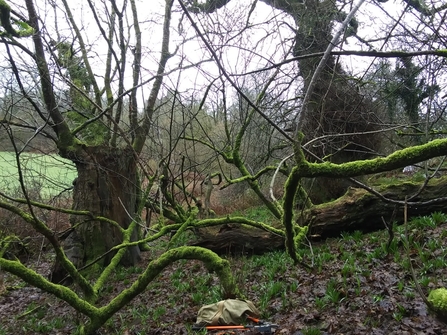Last summer we were delighted when Natural Resources Wales (NRW) agreed to fund a saproxylic invertebrate survey at our Castle Woods Nature Reserve.
Saproxylic is a term given to an organism that depends on dead wood for at least part of its life cycle. Castle Woods is an ancient wood pasture that has since developed into woodland when it was fenced off 2-3 hundred years ago. Because the older trees grew up when their surroundings where more open and less crowded, they’ve been able to spread out and grow more lateral branches, creating a wider variety of habitats. This combined with their great age creates a plethora of dead wood habitats, from rot holes and aerial dead branches to the hollowing out of the older heart wood.
The findings were, as expected, particularly rich. 10 nationally scares beetles such as the tumbling flower beetle and a hairy spider beetle, solitary wasps of which some had few welsh records, and numerous notable flies including 2 nationally threatened species- a fungus gnat and a window fly.
The report for the survey had some useful management advice to help us safeguard this valuable habitat. We have already enacted some of this advise, this winter we began the slow task of sensitively halo thinning around the veteran trees. This will help reduce competition for light and enable the trees to maintain their open growth form. We are also in the process of sourcing some hawthorn and elder to add to the understory. The report highlighted the importance of the white blossom of flowering trees and shrubs as a feeding resource for insects developing in decaying wood.

